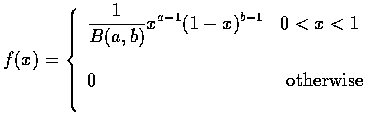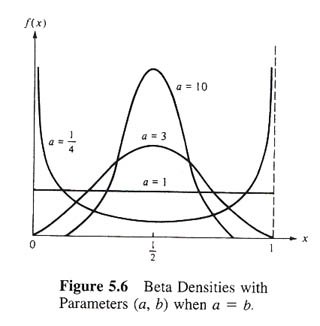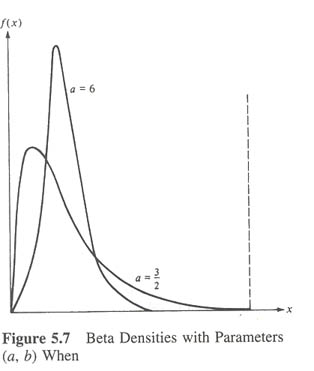

![$\displaystyle f(x)=\frac{1}{\pi}\frac{1}{[1+(x-\theta)^2]}\qquad -\infty<x<\infty$](img5.gif)


The beta distribution can be used to model a random phenomenon whose set of possible values is some finite interval [c,d] -- which by letting c denote the origin and taking d-c as a unit measurement can be transformed into the interval [0,1].
When a=b, the beta density is symmetric about
![]() ,
giving more
and more weight to regions about
,
giving more
and more weight to regions about
![]() as the common value aincreases. (see as follow).
as the common value aincreases. (see as follow).

When b>a, the density is skewed to the left (in the sense that smaller values become more likely); and it is skewed to the right when a>b (see as follow).

The following relationship can be shown to exist between


![$\begin{array}{rcl}
E[X]&=&\displaystyle\frac{a}{a+b} \\ \\
Var(X)&=&\displaystyle\frac{ab}{(a+b)^2(a+b+1)} \\ \\
\end{array}$](img10.gif)